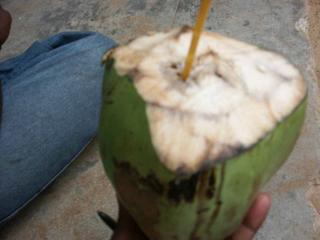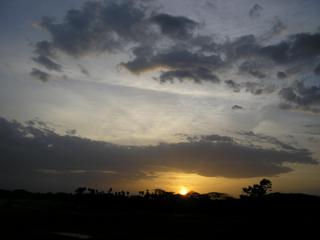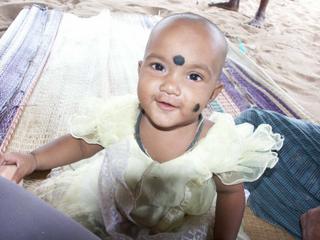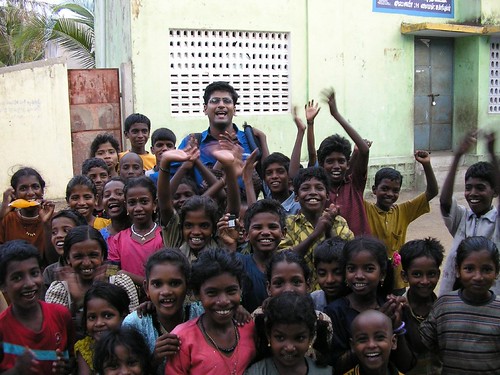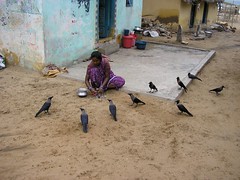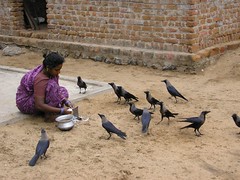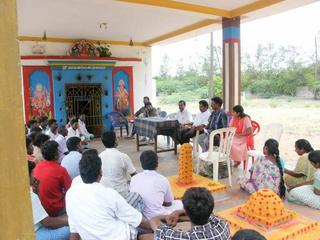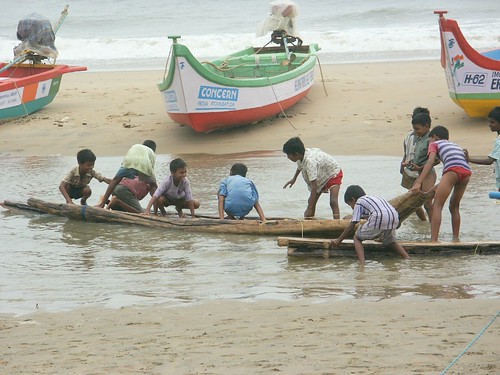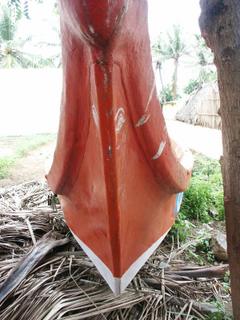
Some three kilometres from Kovalam Beach near Chennai lies Chemmanjeri kuppam. Another typical fishermen village. Almost same scenes I would later witness in other kuppams --- an Amman temple (village Deity), a small Government school (A,B,C,D and 'ua,aaa,yi, yeee' scribbled all over the walls with chalkpiece and charcoal), a narrow tar road leading to the sea, some coconut trees, thatched huts (with palm leaves) some small concrete houses built by the Fisheries department of the Tamilnadu Government as part of a phased housing Scheme, some good houses that stand testimony to the money from good catches, the fiber boats, the catamarans [tree trunks shaved off and tied together to make a boat] and of course the remains [garbage, plastic bags, damaged houses that remain as a heap of bricks] of the tsunami. I have come here to see the night school run in the government school building. Compared to other places, Chemmanjeri is lucky - the children do not have to travel much to school. It is right here. While walking inside the school building, I am reminded of Sadraskuppam where around 55 children huddle below one light bulb to finish their lessons and homework.
While I walk towards the sea, Chandran, a local fisherman starts walking with me too. This is another thing that I noticed in most kuppams.You just cannot walk around alone, clicking photographs and taking notes, even if you want to, someone will definitely come to you, stick with you till you leave. Yes, they will tell all the stories BT to AT (Before Tsunami to After Tsunami) and some more behind-the-screen stories, but won't let you take notes alone. So, here is Chandran who tells me that their houses might look good, but their foundation is weak because the tsunami waters have gone down and weakened it. So, they want new houses, but would still prefer to keep the old ones (same story, again!). Double benefit, I think, but choose to remain silent and just nod. Four new boats gifted by CRDS have been delivered today and they quietly lie on the beach sands. The talk turns to making boats now. "Normally, when they pour the foam into the reenforcements in the fiber boat, it needs 7 or 8 days to settle and strengthen, but the boat makers now are just letting it stay for 2 or 3 days for obvious reasons - they want to make more boats in less time." "Does this compromise on quality or it doesn't make a big difference?" I ask him wondering at the boat's light weight body and strikingly vibrant colors. "Don't know, can't say till we put it to the actual test by taking it into the sea".
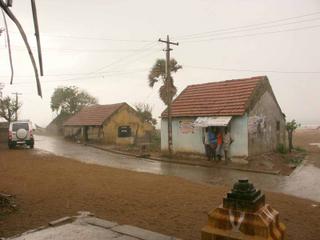
One of the well-known actors of Tamil cinema, Prakash Raj, lives here in a huge bungalow, close to the sea. Chandran notices me looking at the house.
"It is Prakash Raj's. He was of good help on the day of the Tsunami. He made arrangements to give us rice and lentils for two days, but he went to a safer place the next day." Probably, this gave the actor a chance to repay the love and sympathy the villagers showered when his child died last year after accidentally falling off the roof of his home.
